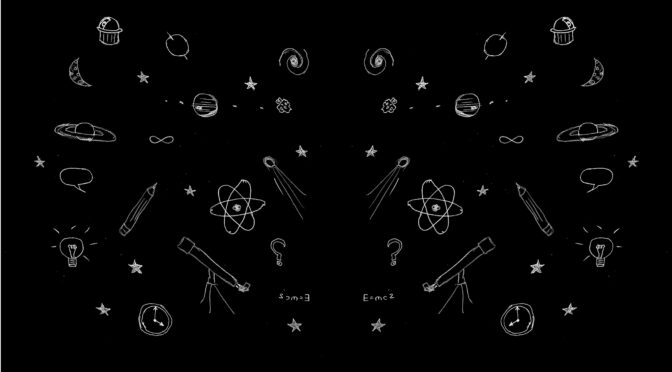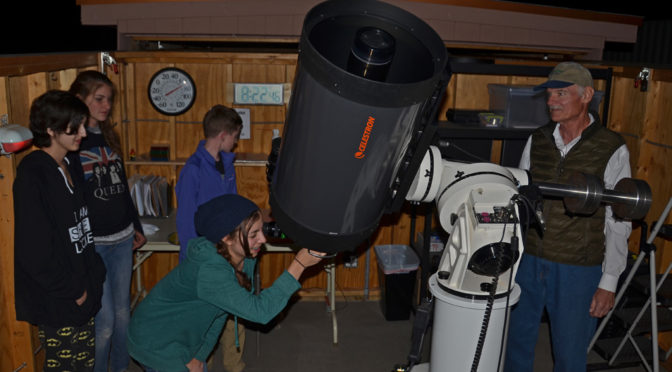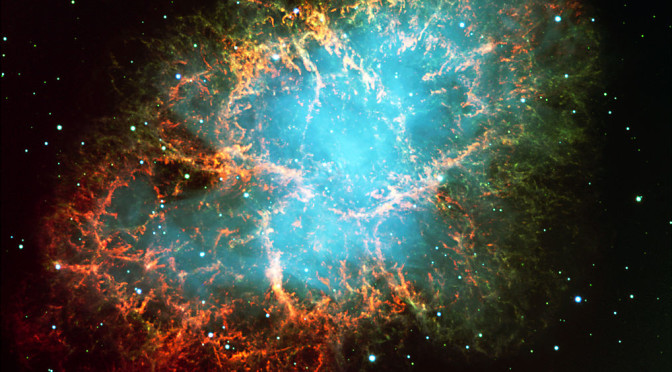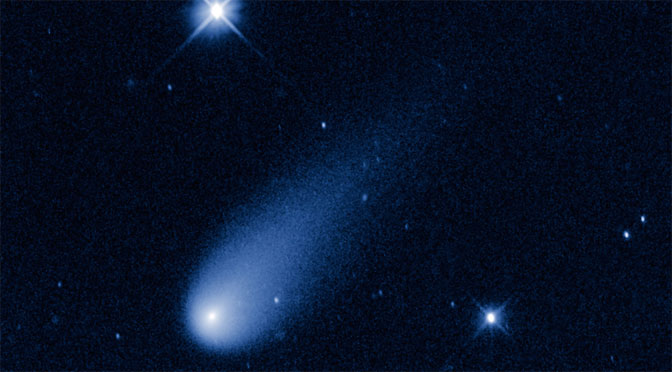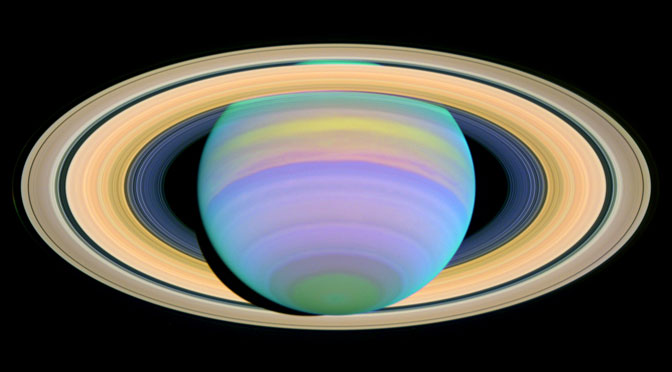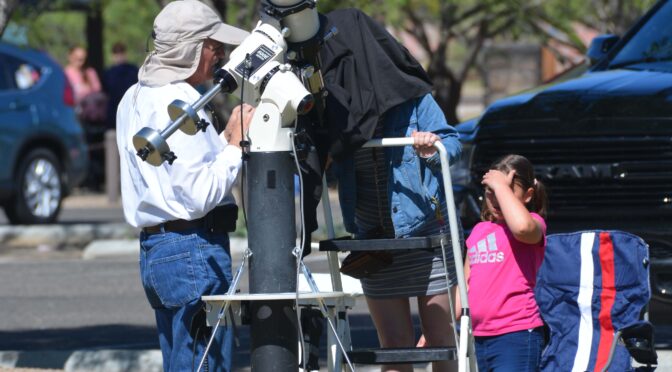
General Meeting
Astronomy Fundamentals Meeting
Next (ONLINE): Thursday, February 13, 2025
6:30 – 8:00 PM
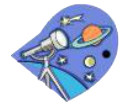
Come join us for a presentation from the fundamentals of amateur astronomy. Learn your way around the night sky to add to your observing enjoyment. Meetings are on the second Thursday of each month. You can find our past recordings on the Club’s YouTube channel https://www.youtube.com/playlist?list=PLXbeCAsGDdSZlqE0IAEUBmZxvmCUJi5Tr
Contact: Connor Justice
Email: fundamentals[at]tucsonastronomy.org
Star Party at St. Francis in the Foothills Church
March 29 @ 7:15 pm – 9:00 pm
Join TAAA for a Star Party at St. Francis Church in the Foothills Church, Tucson AZ Located near River Rd. and Swan Rd at 4625 E. River Road, this venue is well located for many in the central Tucson and Foothills communities.
Join us as we observe Planets (Many of the planets are now available in the earlly evening sky), Nebulas, Galaxies, and more! Viewing will be from 7:15pm to 9pm at the far north end of the parking lot. (Stay to the left all the way to the end).
Bernie Stinger
612-396-8839
astronomy-events@tucsonastronomy.org
ONLINE – Astronomy Fundamentals Meeting – March 2025
HYBRID – General Meeting – March 2025
March 7 @ 6:30 pm – 8:00 pm
Presentation:
The number of known exoplanets (planets outside the Solar System) grows daily. Over the past few decades, dedicated missions using both ground and space telescopes have discovered over 5,000 exoplanets, many of which seem unlike anything in our own Solar System. While such discovery missions aren’t new, our ability to study these worlds in detail has only recently been enabled by the launch of the James Webb Space Telescope (JWST) in late 2021. Over the past four years, JWST has opened powerful new windows into the atmospheres of extra-solar worlds, yielding unexpected findings and a richer understanding of the diversity of planets in the Milky Way Galaxy. Matthew Murphy will share a few of the most exciting recent discoveries about exoplanet atmospheres by JWST, led by a world-wide team of researchers, including Murphy and others at the University of Arizona. These include what appears to be a new class of planet, nonexistent in our own Solar System. In addition to these discoveries, JWST’s unique power enables researchers to peer into exoplanet atmospheres along new dimensions, and better comprehend their complexity. Matthew will tell the exciting story of how this works, and the discovery his team made as a result on a planet (WASP-107b) considered ‘strange’ to us.
Biography:
Matthew Murphy is a PhD candidate at the University of Arizona’s Steward Observatory. His work is dedicated to observing and studying the atmospheres of planets beyond our Solar System. Matthew is an expert in using the largest and most powerful telescopes around the world and in space, including the Hubble Space Telescope and James Webb Space Telescope. He has published several scientific articles making new discoveries about exoplanets. Matthew will be graduating with his PhD later this year. He earned his Bachelor’s degree from Stony Brook University in 2020.

Caption: Artist’s illustration of exoplanet WASP-107b
Artist: Rachael Amaro/University of Arizona
Mae Smith, TAAA President
Planets of the Month: February 2025
By Erich Karkoschka

Mercury starts its good evening visibility on the 21st, lasting until March 14. You can find it looking low straight west around 7 pm.

Saturn is getting close to the sun and is only visible until the 21st. On the 25th, it can be found 2 degrees south of Mercury in binoculars. Saturn’s rings become very thin, only one arc-second wide. In March, Earth will move to the south side of the rings for the next 14 years.

Venus obtains its all-time maximum magnitude of -4.9. Its brightness makes it possible to find during daytime if the sky is very clear. Around 3 pm it is 60 degrees high in the south. By sunset, it still is 40 degrees high. Telescopes show a growing crescent in size, to 40 arc-seconds, but getting thinner with only 16% illumination. It is moving toward its inferior conjunction on March 20.

Jupiter transits 80 degrees high around 7 pm near Aldebaran. Its size is comparable to that of Venus, but its magnitude is only -2.4, which is still a magnitude brighter than Sirius, lower in the sky.

Mars shines at magnitude -1 near Pollux. It transits 84 degrees high around 10 pm. Its 13 arc-second disk still shows good detail in telescopes.

Uranus is visible in binoculars 6 degrees south of the Pleiades, visible during the evening.
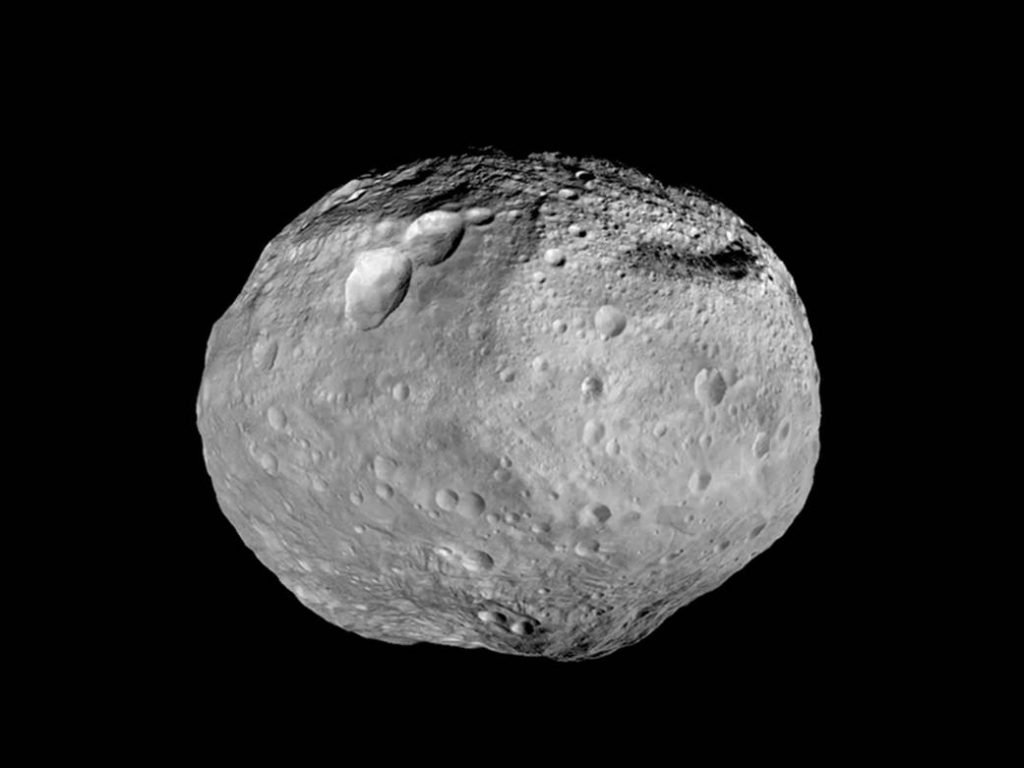
Vesta brightens to above magnitude 7, starting a good visibility period this spring. It rises just before midnight in Libra.

The very young moon will be visible on the last day of February. It will be only 24 hours after New Moon. You can find it shortly after sunset near the horizon about 5 degrees left of straight west. The following Full Moon on March 14 will bring a TOTAL LUNAR ECLIPSE.
Solar Telescope Observing @ Saguaro NP – East
March 30 @ 1:00 pm – 3:00 pm
Join the Tucson Amateur Astronomy Association (TAAA) and Saguaro National Park – East for some Sun gazing at the park. We will observe the Sun through telescopes with appropriate filters so you will get to see sunspots, prominences, flares, and more.
The Sun is nearing its peak in the sunspot cycle so there is lots of activity on its surface.
This event is FREE and open to the public, no reservations required. NPS admission fees apply.
The telescopes will be set up at the Bicycle Ramada next to the Visitors Center.
This event will most likely be canceled in the event of clouds/rain.
Bernie Stinger
612-396-8839
astronomy-events@tucsonastronomy.org
Stargazing at Chiricahua National Monument
March 28 @ 7:30 pm – 9:30 pm
Join TAAA for an evening of stargazing to view amazing solar system and deep sky objects from a truly Dark Sky Park. You will see planets, nebulae, star clusters, double stars, galaxies millions of light years away, and lots more. We will have several telescopes for public viewing.
Observing location will be at the Faraway Ranch parking lot just past the entrance gate about 1/2 mile. The event is free of charge, no reservations are required. Please try to use red light flashlights and minimize white light (to include cell phones) that will hinder your night vision.
Chiricahua National Monument website: https://www.nps.gov/chir/index.htm.
Weather dependent — Follow the event on the TAAA Facebook page to get weather and other updates: https://www.facebook.com/TucsonAstronomy/.
Check back here or on our Facebook page closer to the event for any updates.
Bernie Stinger
612-396-8839
astronomy-events@tucsonastronomy.org
Stargazing at Tumacacori National Historical Park
March 21 @ 7:30 pm – 9:30 pm
Join TAAA and the National Park Service for an evening of stargazing at Tumacacori National Historical Park . Address below.
The Tucson Amateur Astronomy Association (TAAA) will have several telescopes with operators for astronomical viewing in front of the Old Mission.
We will observe Planets, Nebulae, Galaxies, Star Clusters and lots more. Great opportunity to look through a variety of telescopes.
Event is free, no reservations required, but NPS admission fees apply.
Weather dependent, check back here prior to event for possible updates on day of event.
Bernie Stinger
612-396-8839
astronomy-events@tucsonastronomy.org
Stargazing at Tucson Mountain Park – Juan Santa Cruz Picnic Area
March 7 @ 7:00 pm – 9:00 pm
Star Party @ Tucson Mountain Park – Juan Santa Cruz Picnic Area
Tucson, AZ (right next to Sonoran Desert Museum)
Viewing Location: Small side loop on East side of main loop.
Information: Great dark skies in Western Tucson. Star Party open to the Public. Cost: FREE.
Tucson Amateur Astronomy Association will have several telescopes for astronomical viewing. We will observe Planets, Nebulae, Galaxies, Star Clusters and lots more. Great opportunity to look through a variety of telescopes. Weather dependent.
For real-time updates, follow this event on the Tucson Amateur Astronomy Association Facebook Events Page: TAAA Facebook Events page
Event is FREE but REGISTRATION IS REQUIRED. Go to this link to register: https://bit.ly/ticketsEE
These events may fill up early.
Bernie Stinger
612-396-8839
astronomy-events@tucsonastronomy.org
Stargazing at Saguaro NP – East
March 1 @ 7:00 pm – 9:00 pm
Star Party – Saguaro National Park – East
3693 S Old Spanish Trail
Tucson, AZ 85730
Great dark skies on the East side of Tucson at Saguaro National Park – East.
Star Party is open to the Public. Event is free, no registration required, but NPS admission fees apply.
The Tucson Amateur Astronomy Association will have several telescopes for astronomical viewing. We will observe Planets, Nebulae, Galaxies, Star Clusters and lots more.
Great opportunity to look through a variety of telescopes.
Weather dependent. For real-time updates, follow this event on the Tucson Amateur Astronomy Association Facebook Events Page: Tucson Amateur Astronomy Association | Facebook
Bernie Stinger
612-396-8839
astronomy-events@tucsonastronomy.org
Stargazing at Organ Pipe Cactus National Monument
March 1 @ 7:00 pm – 9:00 pm
Join us at Organ Pipe Cactus National Monument for an evening of stargazing under extremely dark skies at a historic location. Few locations in the U.S. have skies this dark!
TAAA will have volunteer astronomers with Telescopes setup and viewing Planets,
Nebulas, Galaxies, Star Clusters and more, under the dark skies of Southern Arizona!
Star Party is free but national park admission fees apply.
Weather dependent. For real-time updates, follow this event on the Tucson Amateur Astronomy Association Facebook Events Page: https://www.facebook.com/TucsonAstronomy/events
Bernie Stinger
612-396-8839
astronomy-events@tucsonastronomy.org


